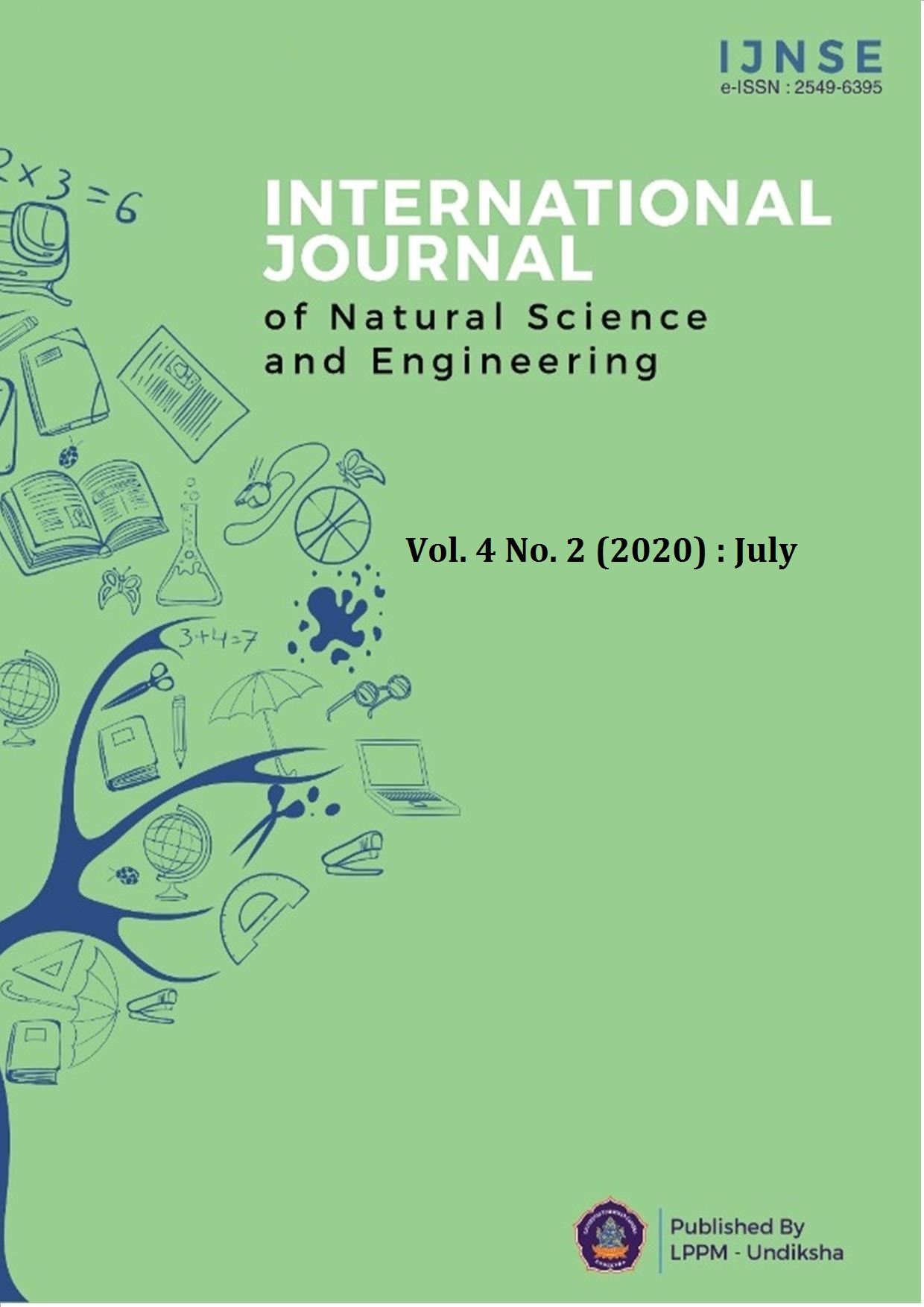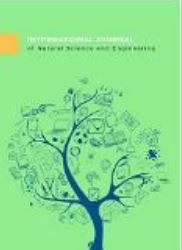Exploration and Utilization of Plant Species Based on Social Culture (Hindu Religion Ceremony) in Tenganan Pegringingan Village, Karangasem Regency, Bali Province, Indonesia
DOI:
https://doi.org/10.23887/ijnse.v4i2.24781Abstract
This research aims to find out (1) the plants that were used in religious ceremonies (Hinduism) in accordance with the Bali Aga Tenganan Pegringsingan culture. 2) the making process of the various means needed in religious ceremonies (Hinduism) related to the utilization of useful plant species in Bukit Kangin Forest, Tenganan Pegringsingan Village. The Research was explorative (vegetation) and socio-system (community) research. The populations of this research were ecosystem aspects and sociosystem aspects. The ecosystem aspects included all of the useful plant species in Bukit Kangin Forest of Tenganan Pegringsingan village. Meawhile, the sociosystem aspects included the village officials, the village public figures and the community of Tenganan Pegringsingan village. The ecosystem sample (the vegetation) used in this research included the plant species in the forest of Tenganan Pegringsingan Village covered by the 1x1m2 sized seedling square, 10x10m2 sized sapling square and 20x20m2 sized square for trees (mature plants). There were 65 squares in total. The sociosystem samples in this research were the village officials, public figures, shamans, offerers, craftsmen, and the public in Tenganan Pegringsingan village. The methods applied in this research were (1) square method for ecosystem (vegetation) parameter. (2) Interview, questionnaire and observation for sociosystem parameter. The collected data were further analyzed descriptively. The results of the research showed that (1) of 46 useful plant species found in Bukit Kangin forest of Tenganan Pegringsingan, 29 of them were plant species that were utilized for religious ceremonies (Hinduism), meanwhile there were 17 plant species utilized for clothing, food, shelter, industry, medicine, and other household purposes. (2) The utilization of plant species for religious purposes was still in traditional method, in accordance with the socio-cultural of the local community.
References
Abioso, W. S., & Triyadi, S. (2017). The Behavior – Milieu Synomorphy of Communal Space in Desa Adat Tenganan Pegringsingan Bali Indonesia. International Journal of Architecture, Arts and Applications, 3(2), 11–20. https://doi.org/10.11648/j.ijaaa.20170302.11 DOI: https://doi.org/10.11648/j.ijaaa.20170302.11
Astawa, I. G., Budiarsa, M., Mbete, A., & Simpen, I. W. (2019). The Interpretation of Ecological Preservation in the Awig-awig (Customary Law) Text of Tenganan Pegringsingan Village: Positive Discourse Analysis. E-Journal of Lingusitics, 13(2), 56–71. https://doi.org/DOI.10.24843/eJL.2018.v.12.i01.p.03
Astawa, I. G., Budiarsa, M., & Simpen, I. W. (2019). The Representation of The Tri Hita Karana Ecosophy in The Awig-awig (Customary Law) Text of Tenganan Pegringsingan Village: Critical Ecolinguistics Perspective. Journal of Language Teaching and Research, 10(2), 396–401. https://doi.org/10.17507/jltr.1002.23 DOI: https://doi.org/10.17507/jltr.1002.23
Barbour, M.G., J. H. Burk., W. D. Pits. 1987. Terrestrial Plant Ecology. Inc. California: The Benjamin/cummings. California: Publishing Company
Dejene, T., Agamy, M. S., Agúndez, D., & Martin-Pinto, P. (2020). Ethnobotanical survey of wild edible fruit tree species in lowland areas of Ethiopia. Forests, 11(2). https://doi.org/10.3390/f11020177 DOI: https://doi.org/10.3390/f11020177
Iskandar, J., & Iskandar, B. S. (2017). Various Plants of Traditional Rituals: Ethnobotanical Research Among The Baduy Community. Biosaintifika: Journal of Biology & Biology Education, 9(1), 114–125. https://doi.org/10.15294/biosaintifika.v9i1.8117 DOI: https://doi.org/10.15294/biosaintifika.v9i1.8117
Nguyen, T. S., Xia, N. H., Van Chu, T., & Van Sam, H. (2019). Ethnobotanical study on medicinal plants in traditional markets of son la province, Vietnam. Forest and Society, 3(2), 171–192. https://doi.org/10.24259/fs.v3i2.6005 DOI: https://doi.org/10.24259/fs.v3i2.6005
Mueller-Dombois & Ellenberg. 1974.Aims and Methods of Vegetation Ecology. Sanfransisco : W. H. Freeman and Company
Pare, D., Hilou, A., Ouedraogo, N., & Guenne, S. (2016). Ethnobotanical Study of Medicinal Plants Used as Anti-Obesity Remedies in the Nomad and Hunter Communities of Burkina Faso. Medicines, 3(2). https://doi.org/10.3390/medicines3020009 DOI: https://doi.org/10.3390/medicines3020009
Sumarlin, D., Dirhamsyah, M., & Hafiz, A. (2015). Identifikasi tumbuhan sumber pangan di hutan tembawang desa aur sampuk kecamatan sengah temila kabupaten landak. Jurnal Hutan Lestari, 4(1), 32–39. http://jurnal.untan.ac.id/index.php/jmfkh/article/view/14481
Wijana, N. (2014). Analisis Komposisi Dan Keanekaragaman Spesies Tumbuhan Di Hutan Desa Bali Aga Tigawasa, Buleleng – Bali. JST (Jurnal Sains Dan Teknologi), 3(1), 288–299. https://doi.org/10.23887/jst-undiksha.v3i1.2907 DOI: https://doi.org/10.23887/jst-undiksha.v3i1.2907
Wijana, N., & Setiawan, I. G. A. N. (2017). Plant Species Mapping and Density in the Village Forest of Penglipuran, Bangli, Bali, Indonesia and Its Use in Learning Media. Journal of Natural Science and Engineering, 1(3), 80–91. https://doi.org/http://dx.doi.org/10.23887/ijnse.v1i3.12937 DOI: https://doi.org/10.23887/ijnse.v1i3.12937





